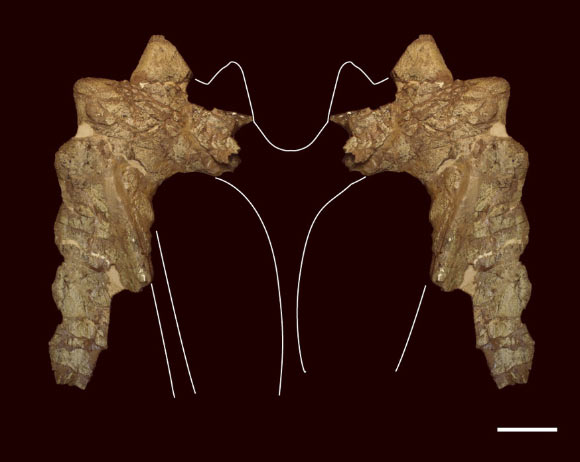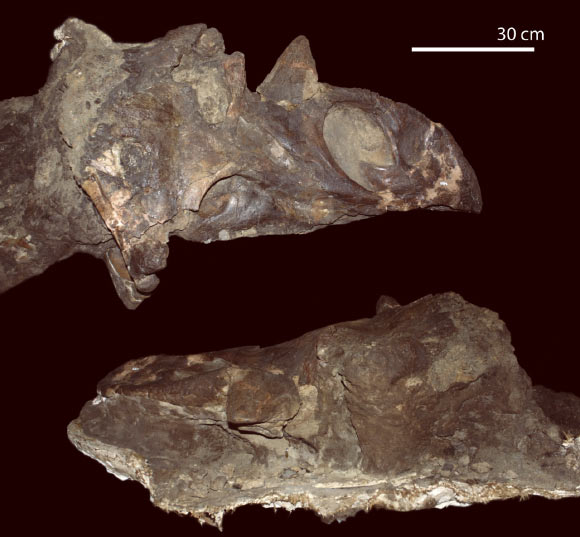Dr Nick Longrich from the University of Bath, UK, has described two new species of chasmosaurine dinosaurs that roamed the ‘lost island continent’ of Laramidia – a swampy, subtropical setting formed when a shallow sea flooded the central region of North America – during the Cretaceous, about 75 million years ago.

Pentaceratops aquiloniua. Image credit: University of Bath.
Western North America hosted a remarkable diversity of dinosaurs during the Campanian period – the fifth of six ages of the Late Cretaceous epoch. Among the most diverse groups was the Chasmosaurinae.
Up until now, ten chasmosaurine species have been recognized from the upper Campanian of western North America, with distinct species occurring in the northern and southern parts of the continent.
The fossilized bones of two horned dinosaurs studied by Dr Longrich were previously classified as Anchiceratops and Chasmosaurus, species known from Canada, but after re-analyzing the skeletons, he realized they more closely resembled dinosaurs from the American Southwest.
One was closely related to Pentaceratops sternbergii from New Mexico, but is a more primitive species.

Frill of Pentaceratops aquilonius. Image credit: Nicholas R. Longrich.
Scientifically named Pentaceratops aquilonius, it was smaller, and differed in the shape of the frill and arrangement of the hornlets on the back.
The other seems to be related to the genus Kosmoceratops from Utah. It seems to be a new species as well, but more complete fossils are needed to be certain.
In a paper published in the journal Cretaceous Research, Dr Longrich proposes that distinct northern and southern provinces existed during the Campanian, but that there was exchange between them.
“The dinosaurs would spread from one part of the continent to the other and then diverge to form new species. Competition between the different species then prevented the dinosaurs from moving between the northern and southern regions.”

Kosmoceratops sp. nov., skull. Image credit: Nicholas R. Longrich.
“The distribution of dinosaur species was very different from the patterns seen in living mammals.”
“In living mammals, there tend to be relatively few large species, and they have large ranges. With Cretaceous dinosaurs, we see a lot of large species in a single habitat. They also tend to be very regional – as you move from one habitat to another, you get a completely different set of species.”
_____
Nicholas R. Longrich. 2014. The horned dinosaurs Pentaceratops and Kosmoceratops from the upper Campanian of Alberta and implications for dinosaur biogeography. Cretaceous Research, vol. 51, pp. 292-308; doi: 10.1016/j.cretres.2014.06.011







